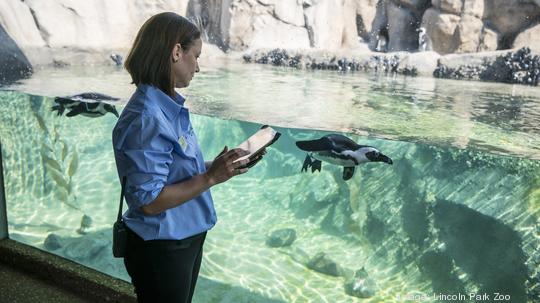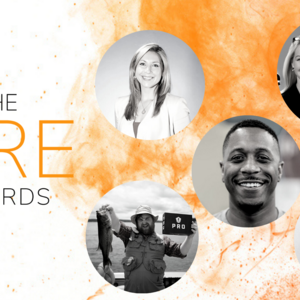
In its more than 150-year history, Chicago's Lincoln Park Zoo experienced its first-ever extended closure last year when it shut down for three months at the start of the pandemic, and again in January 2021 before reopening this March. The pandemic brought with it a host of challenges to the zoo, including layoffs and logistical hurdles around safely bringing back crowds to the popular Chicago attraction.
But Covid-19 also presented the zoo with another dilemma, which the institution had never previously considered: How will the animals act when all visitors are gone? And, perhaps most importantly, what will they do once crowds return?
It turns out, there's an app to determine just that. And it was built in-house by Lincoln Park Zoo scientists.
Launched in 2016, the ZooMonitor app was created by scientist Megan Ross and others at the zoo to better understand how animals feel based on their behavior. Over the years zoo personnel and volunteers have collected over 7,000 hours of data on movement patterns of animals at the zoo in order to get better information about their well being and mood. The app helps create heat maps and other charts that show where animals move throughout their enclosures.
The ZooMonitor app, for example, previously found that tackins, large hoofed animals found in the Himalayas, were using only a small shaded section of their habitat when the temperature got above 70 degrees. That insight led to the zoo installing more shade in the tackins' enclosure.
During Covid, the zoo wanted to know how the animals would react with no visitors coming through the doors for months at a time. So zoo staff and volunteers began tracking their behavior sans crowds, and compared that to its baseline data from years before. As it turns out, the animals barely changed their day-to-day routines.
"For most animals, it was pretty much business as usual," said Katherine Cronin, the park's senior animal welfare scientist and head of its animal welfare science program. "It was almost shocking how little they seemed to change their behavior, and how they used their habitats when visitors were gone."
One exception was the klipspringers, a small antelope species that are somewhat nervous by nature, Cronin said. They increased their foraging and exploring throughout their habitat in a way they hadn't previously, and appeared to use less caution while navigating their surroundings.
The zoo wanted to also measure how the animals reacted once visitors returned. Some animals like penguins and meerkats became more curious than before the pandemic, spending more time at the front of their habitats watching guests, Cronin said. The penguins appeared especially intrigued by visitors, interacting with crowds more than they had before, she said.
But for the majority of animals, there wasn't much change when crowds returned, which was a welcome sign to Lincoln Park Zoo officials who now had data to show the animals weren't feeling added stress or fear from guests.
Perhaps not surprisingly, animals who were new to the zoo, either by transfer from another zoo or who were born during Covid, seemed most curious in the return of visitors, Cronin said.
"For most species, there wasn’t really a noticeable change," Cronin said. "They weren’t hiding and they weren’t alarm calling or things that would alert us that there was high stress."
Since Lincoln Park Zoo launched its ZooMonitor app five years ago, it's been used by 680 zoos and aquariums in 52 different countries around the world. It's used by 165 of the 240 accredited institutions in the Association of Zoos and Aquariums.
Cronin said the app, which is free for zoos to use, plans to enhance its data sharing soon so more zoos can better collaborate on the best ways to care for animals, especially ones where less research has been done, like the American toad, for example.
"How does a toad feel? We can start to ask some of those questions," she said.



